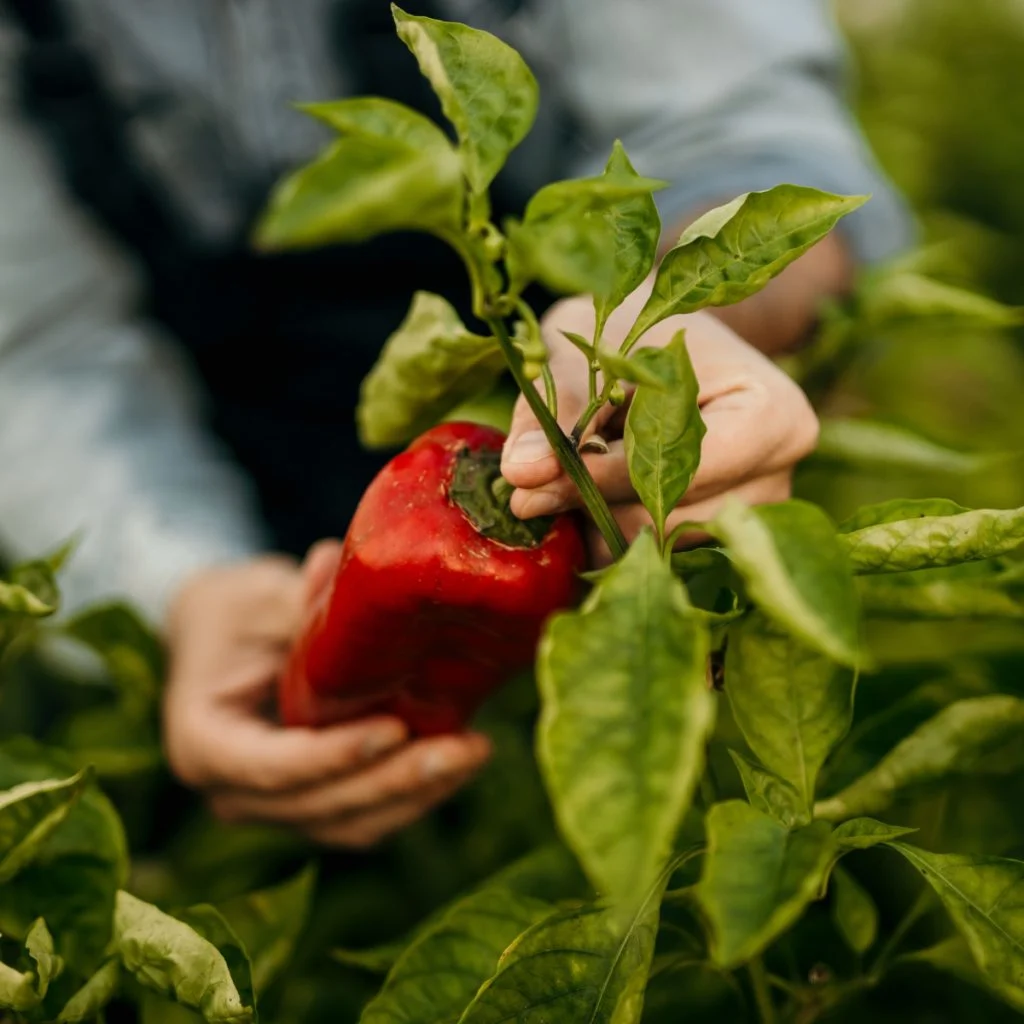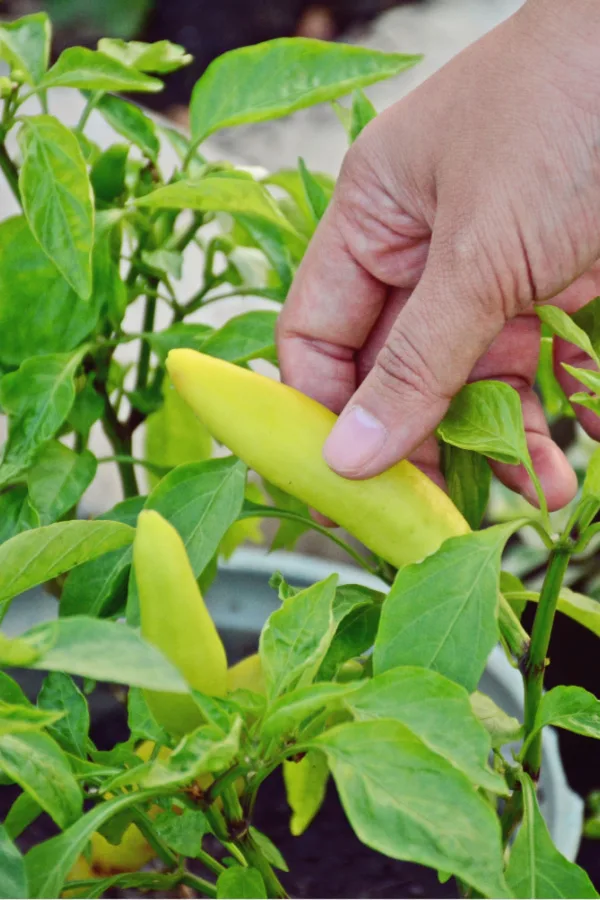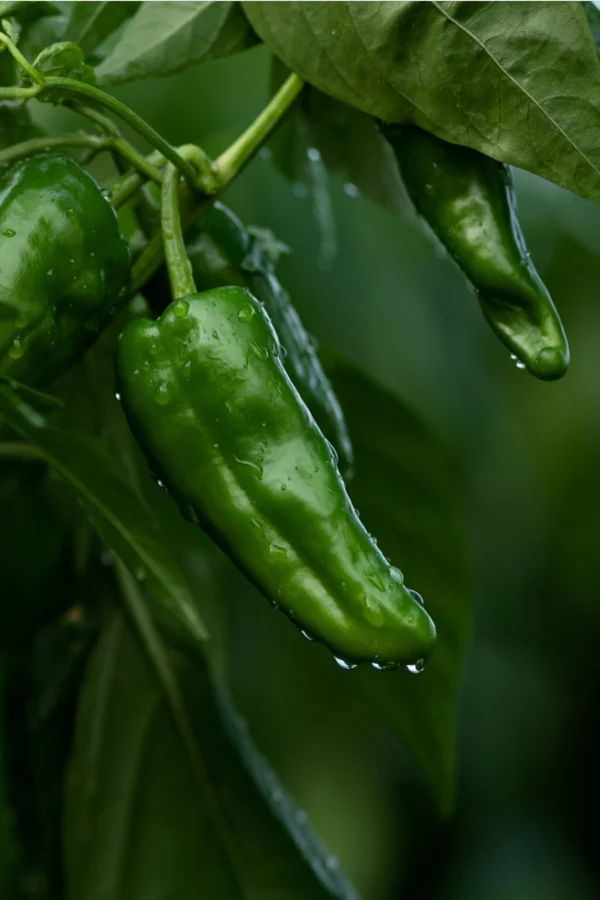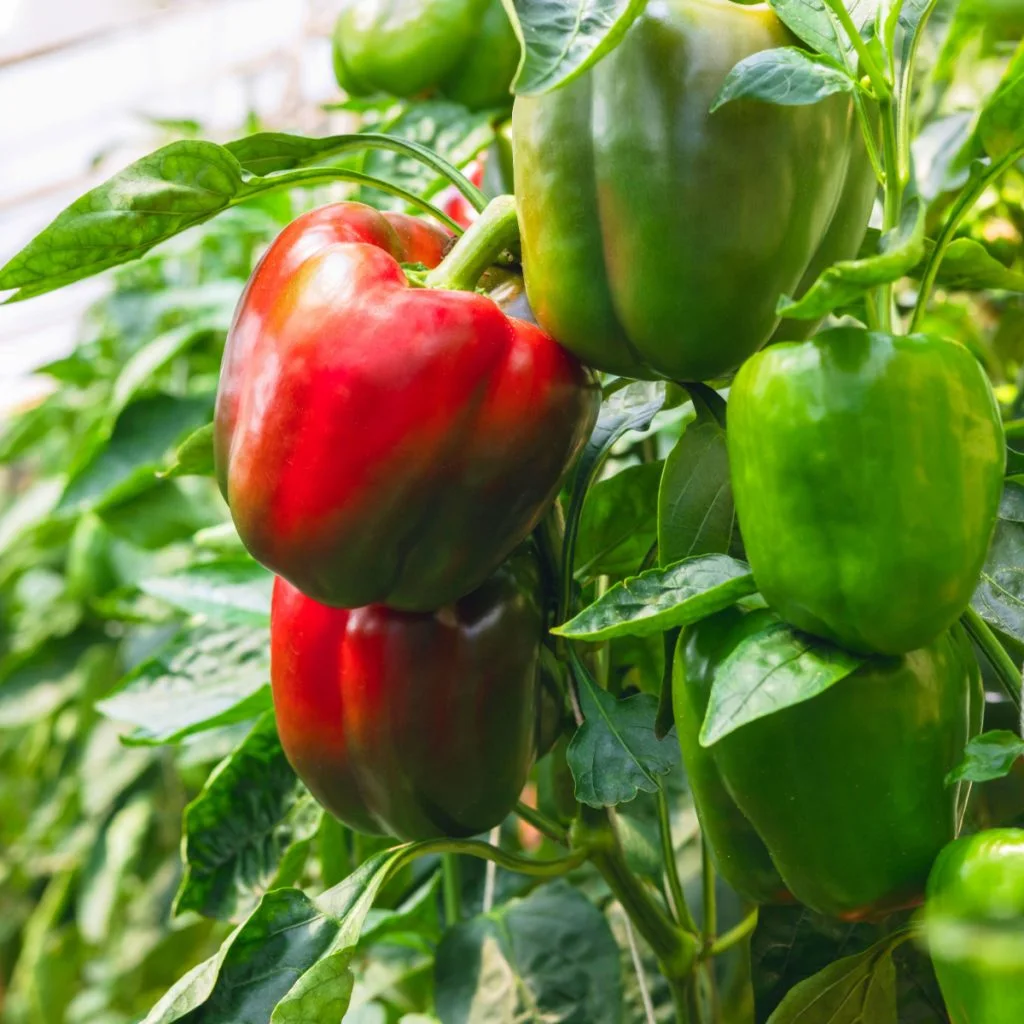Wondering how to tell if your peppers growing on your pepper plants are ready to pick or not?
Of all the vegetables growing in a garden, peppers can be one of the trickiest to know exactly when to harvest. In fact, figuring out the perfect time to harvest peppers can leave many gardeners guessing, especially since they don’t always show clear signs of ripeness like some other crops.
Whether you’re trying to figure out if a green pepper is ready to harvest, or patiently waiting for red, yellow, orange, or even purple peppers to finally change color, knowing the right moment to pick can feel confusing. And it’s easy to understand why!

The simple fact is, peppers usually take longer to mature than many other summer vegetables. While crops like tomatoes or cucumbers ripen early and often, peppers can take their time. Most stay light green for what seems like forever before showing any signs of turning color.
But the good news is that picking peppers doesn’t have to be a mystery. With just a few helpful tips, you’ll be able to tell exactly when to harvest them. And even better, as you will see below – knowing when to pick them the right way and at the right time can help your plants produce even more!
How To Tell When Your Peppers Are Ready To Harvest
Why Peppers Are Different Than Tomatoes
Even though tomatoes and peppers are both in the same plant family, they behave very differently when it comes to ripening. Tomatoes are best picked just as they start to change color. Once off the plant, they continue to ripen quickly and evenly. In fact, picking them early can help avoid problems like splitting or pest damage.
Peppers, on the other hand, are better left to ripen fully on the plant. While it’s true that peppers can ripen off the vine, it takes longer and doesn’t always work well. The color may not change fully, and the taste is far from ideal.
Unlike tomatoes, peppers ripen best while still attached to the plant, where they continue to get nutrients and sunlight. So whether you’re growing bell peppers, hot peppers, or any of the sweet colored varieties, it’s important to understand that peppers just take more time to reach maturity.

Many new gardeners worry that their peppers aren’t ripening fast enough, especially when they compare them to their tomato harvest. But patience is key when it comes to growing peppers.
Picking Your First Peppers Off Early
One of the best things you can do for your pepper plants is to start picking a few peppers early -before they’ve fully changed color. This not only gives you an early harvest, but also helps your plants grow better and produce more peppers in the long run.
The first peppers your plant produces use up a lot of energy. Because of this, they also tend to ripen more slowly. By picking a few of them early, you lighten the load on the plant. That gives the plant more energy to put toward growing new peppers and ripening the rest more quickly.
A good rule to follow is this: once your peppers have reached close to full size, go ahead and pick a few of them – even if they’re still green. Doing this can help your plant shift focus toward flowering again and putting out more peppers instead of putting all of its effort into ripening a handful of fruits.
Keep in mind that peppers picked early won’t be quite as flavorful. Sweet peppers won’t be as sweet, and hot peppers won’t be as spicy. But they’ll still be great for cooking, salads, and snacking. And even more, they’ll get your plant moving toward a better and faster overall harvest!

How To Tell When A Pepper Is Ready To Pick
So how do you know when a pepper is truly ripe and ready to harvest?
The best way is to pay attention to both size and color. Every variety of pepper has its own ideal size and final color, so it helps to know what your specific pepper plant should look like when it’s mature. But of the two – color is the most important!
Cayenne peppers, for example, usually grow to around 4 to 6 inches in length and turn bright red when ripe. Green bell peppers typically measure 3 to 5 inches across and have a deep, glossy green appearance. Jalapeños are usually 3 to 4 inches long and turn from green to dark red or black if left to fully ripen.
When your peppers reach their full size and the skin is firm, glossy, and its color is on point – that’s the best time to pick. Some peppers will mature smaller – but if they have the color and firmness, it’s time to pick.
Don’t Let Your Plants Get Overloaded
So now that you know how to tell when your peppers are ready to pick – use those tips to avoid letting your pepper plants carry too much fruit at once on their branches.
As the season moves into late summer, pepper plants often begin to produce a lot of fruit all at once. While it’s exciting to see so many peppers forming and changing color, letting too many stay on the plant for too long can cause problems.

The Issue With Too Many Peppers
If a plant has too many peppers ripening at the same time, it can become stressed. This condition is called “fruit overload.” When this happens, the plant slows down or even stops producing new blooms and fruit.
It puts all of its energy into ripening the peppers it already has. As a result, you end up with fewer new peppers for the rest of the season.
To avoid this, make a habit of harvesting them regularly. This keeps the plant working and producing steadily. It also keeps your plants from becoming top-heavy or weighed down, which can cause branches to break or the plant to fall over.
It’s also helpful to keep feeding your plants through the summer to keep production up. Always use a liquid fertilizer that’s high in phosphorus and potassium to encourage more blooms and fruit. Affiliate Link: Farmer’s Secret Fruit & Bloom Booster Fertilizer (32oz)
This type of fertilizer allows the plant to work harder to produce new fruit – and not just green growth. Unfortunately, fertilizers with too much nitrogen will simply cause the plant to grow bigger – all at the expense of new blooms.
Feeding every 7 to 10 days with a diluted dose will make a big difference in just how much your pepper plants produce. For more on fertilizing peppers, check out our article: The Best Way To Fertilize Pepper Plants.
Storing Peppers After Picking
Once you’ve picked your peppers, how you store them will play a vital role in how long they stay fresh and flavorful. If you’re trying to ripen peppers after harvesting, place them in a cool, dry spot out of direct sunlight.

A wire rack or open tray allows air to circulate around the peppers. This then helps them ripen evenly and prevents mold.
If you plan to preserve your peppers by canning, freezing, or drying, it’s best to process them as soon after picking as possible. The fresher they are, the better they’ll taste – and the more nutrients they’ll hold.
Unlike tomatoes, when storing fresh peppers, the refrigerator works well. Peppers can last one to two weeks in the crisper drawer without losing too much flavor or texture. Just be sure not to wash them until you’re ready to use them, as moisture will shorten their shelf life.
Here’s how to tell when your peppers are ready to pick like a pro. And – to being rewarded with a long and productive season!
Simple Garden Life
Follow Our Facebook Page For Even More Great Tips! Simple Garden Life Facebook Page
Simple Garden Life is a website dedicated to keeping gardening fun, simple and enjoyable! We publish two new articles each week along with a new garden podcast episode every two weeks. This article may contain affiliate links.
